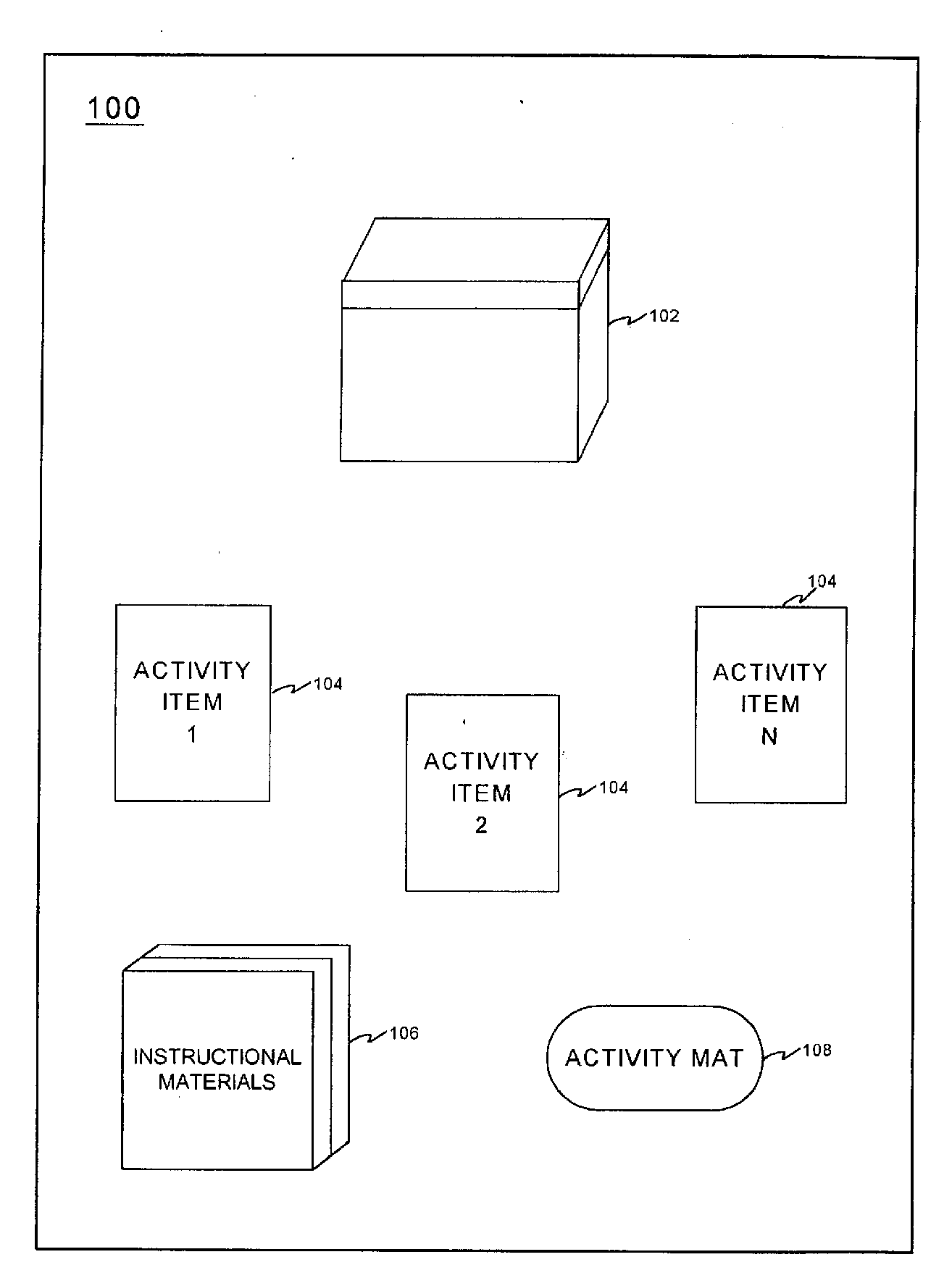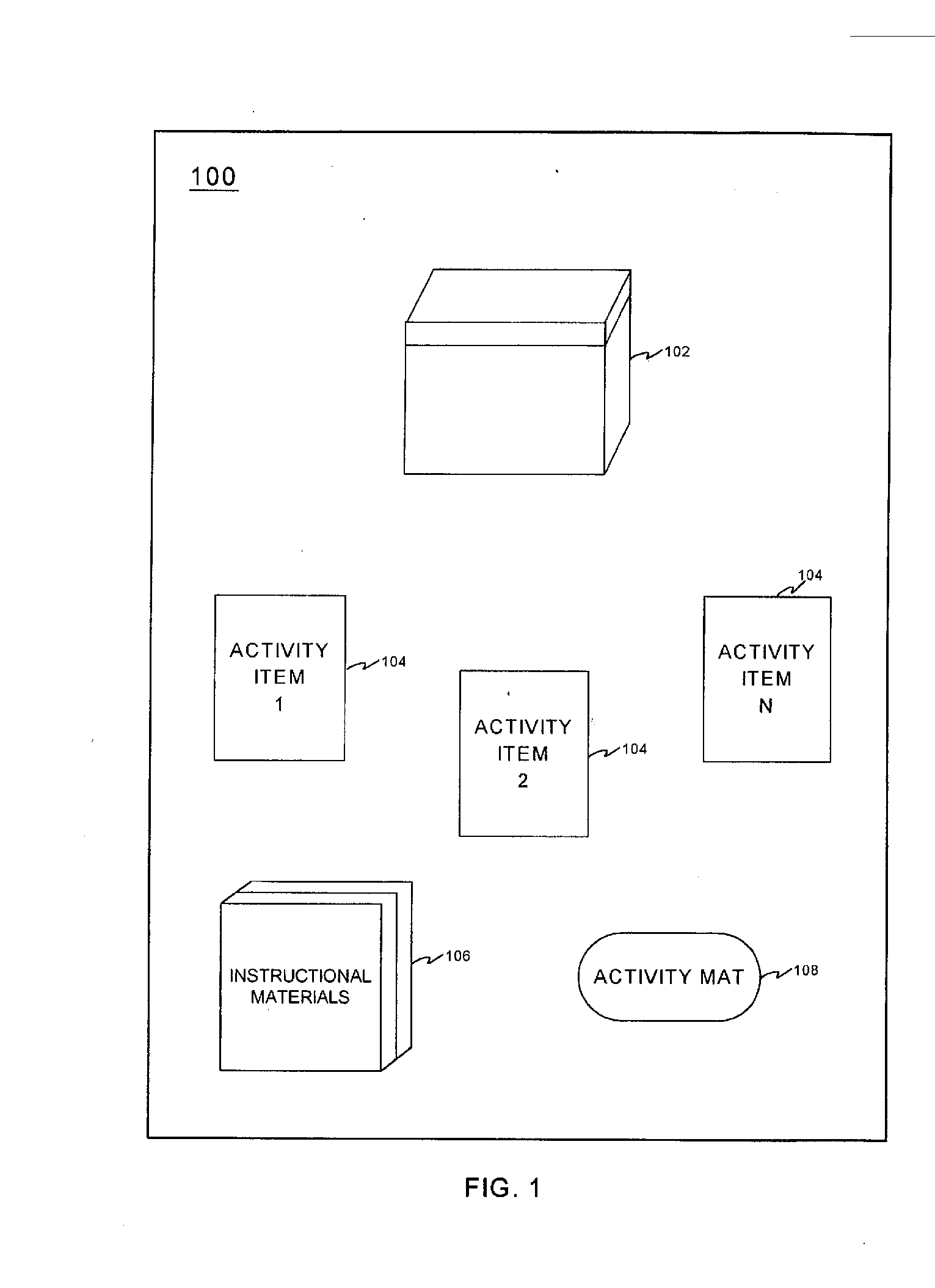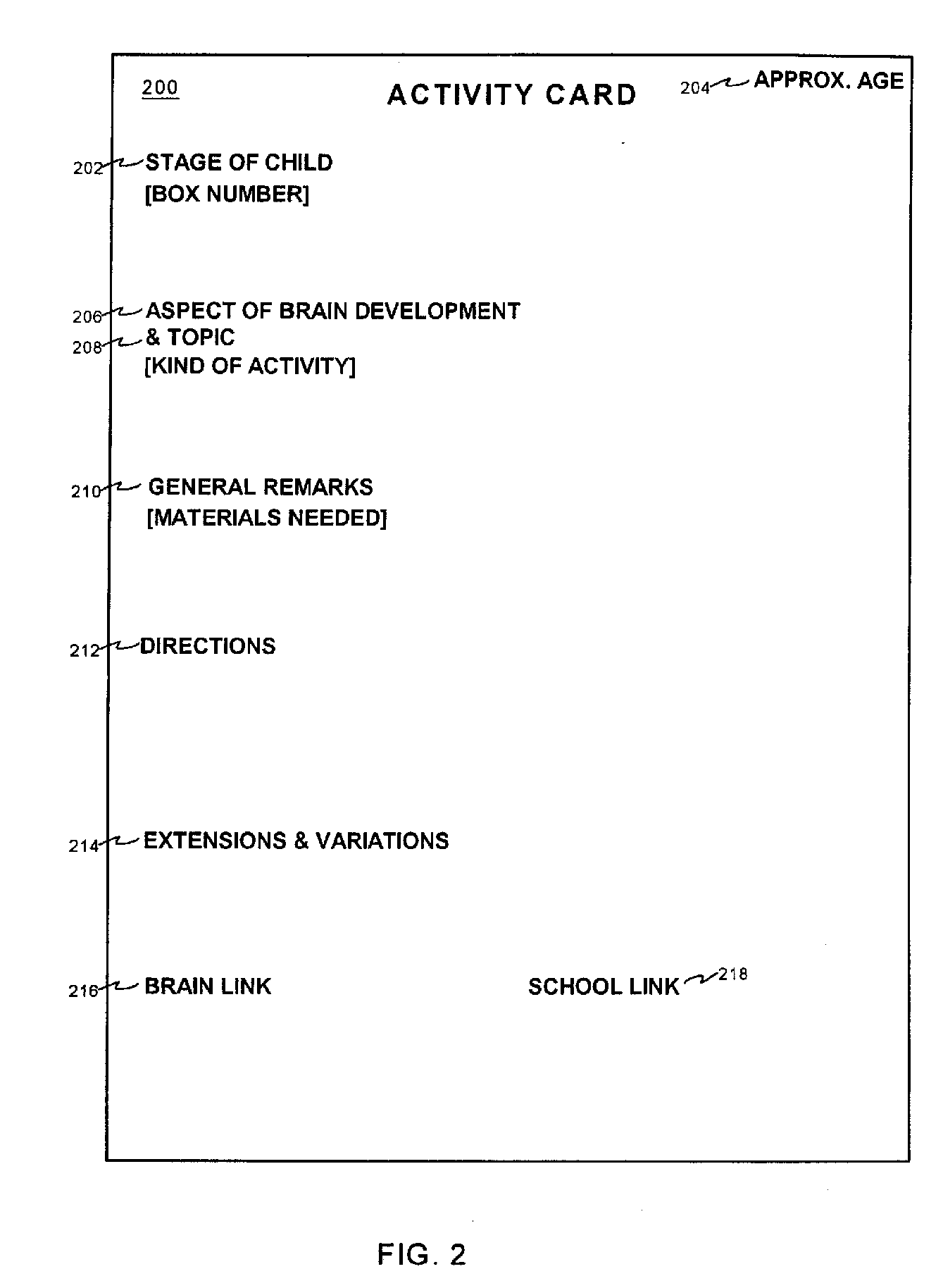System and method for facilitating early childhood brain development
a brain development and early childhood technology, applied in the field of educational systems and methods for promoting child development, can solve the problems of impede the formation of what otherwise would be important brain circuits, negatively affecting a child's learning potential, and medical researchers lacked the ability to chart or tap the inner workings of the brain responsible for these observations, so as to facilitate meaningful interaction and facilitate an interactive play session
- Summary
- Abstract
- Description
- Claims
- Application Information
AI Technical Summary
Benefits of technology
Problems solved by technology
Method used
Image
Examples
examples
[0125] The following examples of systems and methods for facilitating early childhood brain development are provided to more specifically describe the invention. These exemplary systems and methods are intended to be merely illustrative and are not intended to limit the description provided above. It will be appreciated that various other embodiments may be practiced, given the above general description.
Exemplary Systems
[0126] The charts of FIGS. 4A and 4B illustrate exemplary systems in accordance with the invention. As seen in FIGS. 4A and 4B, systems for each of the four ages and stages (i.e., infant, baby, toddler, and preschooler) comprise activities that correspond to each of the five aspects of early childhood brain development (i.e., security and emotional attachment, touch and sensory integration, vision and visual discrimination, play and playfulness, and sound and auditory discrimination). Each of the exemplary activities presented in FIGS. 4A and 4B corresponds to an ...
PUM
 Login to View More
Login to View More Abstract
Description
Claims
Application Information
 Login to View More
Login to View More - R&D
- Intellectual Property
- Life Sciences
- Materials
- Tech Scout
- Unparalleled Data Quality
- Higher Quality Content
- 60% Fewer Hallucinations
Browse by: Latest US Patents, China's latest patents, Technical Efficacy Thesaurus, Application Domain, Technology Topic, Popular Technical Reports.
© 2025 PatSnap. All rights reserved.Legal|Privacy policy|Modern Slavery Act Transparency Statement|Sitemap|About US| Contact US: help@patsnap.com



